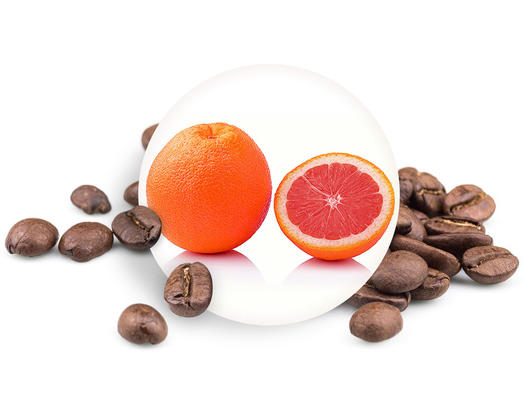cinibeans
SICILIAN ORANGE COFFEE BEANS
SICILIAN ORANGE COFFEE BEANS
Couldn't load pickup availability
Every day can be home to a hot Sicily full of colour and life. Enjoy a unique coffee with juicy blood orange hues, savour the wonderful aroma and enjoy the energy of a delicious drink. Sicilian orange bean coffee is a pleasure to serve at work after a sporting performance or while reading a book. Try it, just for that! Place of origin:
Peru
Species:
Typica
Countryside:
Puno Norte
Sea level f. m.:
1900m
Taste:
Sicilian orange
Processing:
Wet
Composition
Arabica 100%,
Aroma
Cream and the taste of coffee
Sicilian orange coffee, based on the Peruvian Arabica plantation, boasts excellent parameters - an impressive aroma and a wonderful, medium-sweet taste with a full body. Adding the natural aroma of blood orange, it also has a fruity and exotic freshness.
The origins of coffee
If you've never been to Sicily, we'll give you a closer look. Why? To give you a better idea of what inspired us to flavour Peruvian arabica this time. An island of magical contrasts - so many titles in Sicily. You can wander around the quiet villages or head off to the bustle of ancient cities. Climb Mount Etna or laze all day on the beach. You can eat in the finest restaurants or pick an orange from a tree on the side of the road. It will turn blood red inside and the juice will keep you refreshed all day. Sicily is a little paradise.We'll tell you a little about Sicilian orange coffee. Dozens, perhaps hundreds of people are behind its wonderful qualities. It all starts in the high mountains of Peru, where farmers grow coffee tree shrubs (Coffea arabica). They are mostly small farmers, tending just a few hectares of land. But together they can produce about a quarter of the world's coffee.
Between May and September, they head to the plantations to harvest the ripest berries. They have to be transported (usually on their own backs or with the help of mules or donkeys) to the processing site. The fruits are poured into water and pushed through shredding plates to remove the red skin. The beans, still wrapped in yellowish-white flesh, are then fermented in fermentation tanks. Thanks to a natural chemical process, the flesh dissolves and the coffee beans are released. The resulting green coffee is dried either in direct sunlight (often rotating) or in a drying oven.
Others ensure that the coffee is packed in 60 kg bags, transported to the exchange and loaded onto planes or ships. When the coffee arrives, it is looked after by our master roasters - each batch is tested in advance to determine the most suitable temperature and roasting time. In the case of Sicilian Orange coffee, we spray the green beans with a natural flavour-carrying oil before roasting (this is harmless and causes no health problems). The flavour is deeply stored in the beans and will last for many weeks if stored properly.
Making flavoured coffee in an automatic coffee machine
If you want to use flavoured coffee in an automatic coffee maker with an automatic dispenser, we recommend that you make sure that this is possible in the manual of the coffee maker. If the machine manufacturer does not provide information on flavoured coffee, please follow the recommendations below.
The natural flavouring that the coffee is flavoured with may react with the plastics in the container and bleach if it comes into contact with them for a prolonged period of time.
Always load only as much flavoured coffee into the coffee machine as you will consume immediately.
After the flavoured coffee has been prepared, the next cup should be unflavoured coffee. This will clean the machine of any residues of natural flavouring agents.
The same rule should be followed when grinding flavoured coffee (manual and electric).
Instructions for use
Grind the coffee according to its type.Use at least 1.5-2 teaspoons (about 7 g) of ground coffee per cup.Pour the coffee into water at about 95 °C.

